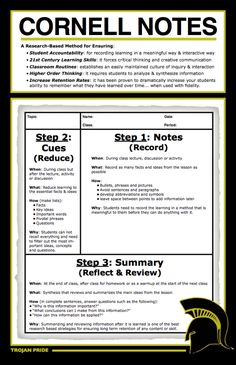
Over the years, note taking has become more of a science than you would have thought. Why waste time scribbling notes that don't help you study more effectively? Here are some methods that have been scientifically proven to help you take better notes in your classrooms or lectures.
Use of Abbreviations
When taking notes in class, speed is essential to ensure that you are able to keep up to pace with the teacher or lecturer yet manage to jot down the key points of the content. If you’re wasting time writing full accounts of the entire lecture, sacrificing clarity and readability in your work, then that will only result in subpar note taking. The simple way to counter this is to make use of abbreviations for taking notes during classes. Make your own common abbreviation lists comprising of symbols or letters to represent words that are used commonly in your classes. For example, in your math lectures, you can simply use “>” to signify “more than” and so on. For an example of some of the helpful abbreviations, click here to see more.

Cornell method
The Cornell method is an entire note taking method that was created in the early 1950s by Walter Pauk. It involves a systematic format for condensing and organising your notes where the student would divide the paper he is writing on into two columns. Subsequently, the bottom few lines at the end of the page are left for revising and writing questions and summary. The two columns are meant for note taking and writing of keywords to assist in the revision process. Students are then required to revise within 24 hours of taking the notes and reflect on the material regularly thereafter. The Cornell method was found to be particularly effective when it came to synthesising and applying learned knowledge in schools.
Mind-Mapping
Mind mapping involves the use of diagrams to organise thoughts and ideas visually, connecting thoughts and forming a “big picture”. Ideas can also be branched out, allowing for visual learners to memorise and learn key concepts much more simply. This method involves starting with a centre topic and gradually branching out towards ideas or theories connected directly to it. As the lines branches outwards, the ideas are less connected although still related to the central idea.
When to review
When reviewing your notes, you could adopt spaced repetition to ensure the ideas you’ve learned sticks to your long term memory. You can start by revising the things you’ve learnt directly after classes and then subsequently before you sleep on that day. Subsequently, space out your revision of the same materials to 1 day, 3 days, 5 days and progressively longer periods of time. You need to take note that if you fail to recall certain topics; you have to restart the process instead of moving forward in the days ahead. You could make use of online software and flashcards to aid in your revision instead of relying on your notes too.